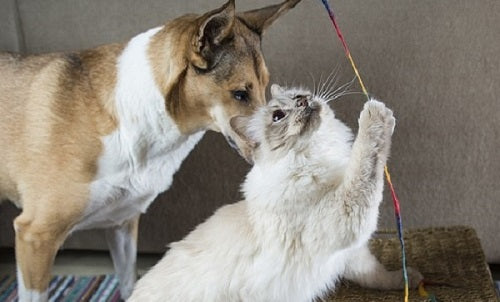
Positive vs Negative Reinforcement Pet Training Techniques
These 2 different methods of teaching and training pets have divided many dog and cat owners on what is best. Positive reinforcement generally means rewarding your pet when he/she does the right thing to encourage that behaviour - for example, giving a treat when your pet obeys a command or goes to the toilet in the correct place. Negative reinforcement generally means punishing your pet when he/she does the wrong thing.
There are some who prefer positive reinforcement, some who prefer negative reinforcement, and some who believe you get the best results when using both methods together. While each of these practices may be successful in producing a well-trained pet, over 100 years of research has taught us two very important lessons:
- While they work, negative reinforcement techniques are no more affective at training your pet than positive reinforcement ones. In other words, you don’t need to use negative reinforcement techniques to efficiently and effectively train your pet.
- The use of negative reinforcement training techniques has adverse effects. While this training philosophy may produce an equally well-trained animal, the initiative and love of learning, as well as the affection this animal has for his/her trainer is severely diminished. Studies have conclusively shown that use of negative reinforcement training techniques increases the risk of the following in your dog or cat:
- Increased behavioural and health problems;
- A fearful relationship with the trainer (you);
- Increased stress and anxiety issues as they get older; and
- Increased levels of aggression toward you, other pets, and other people.

